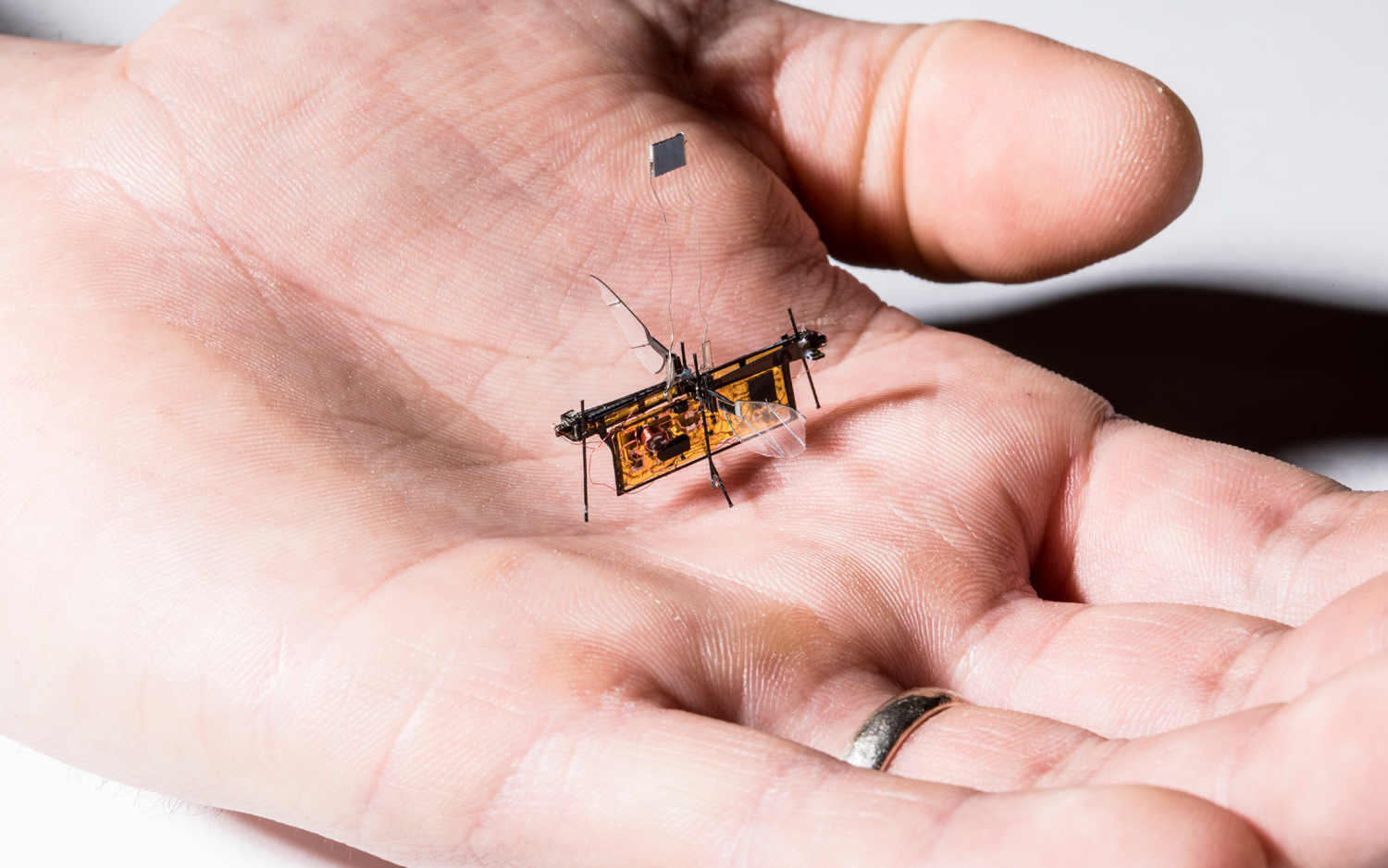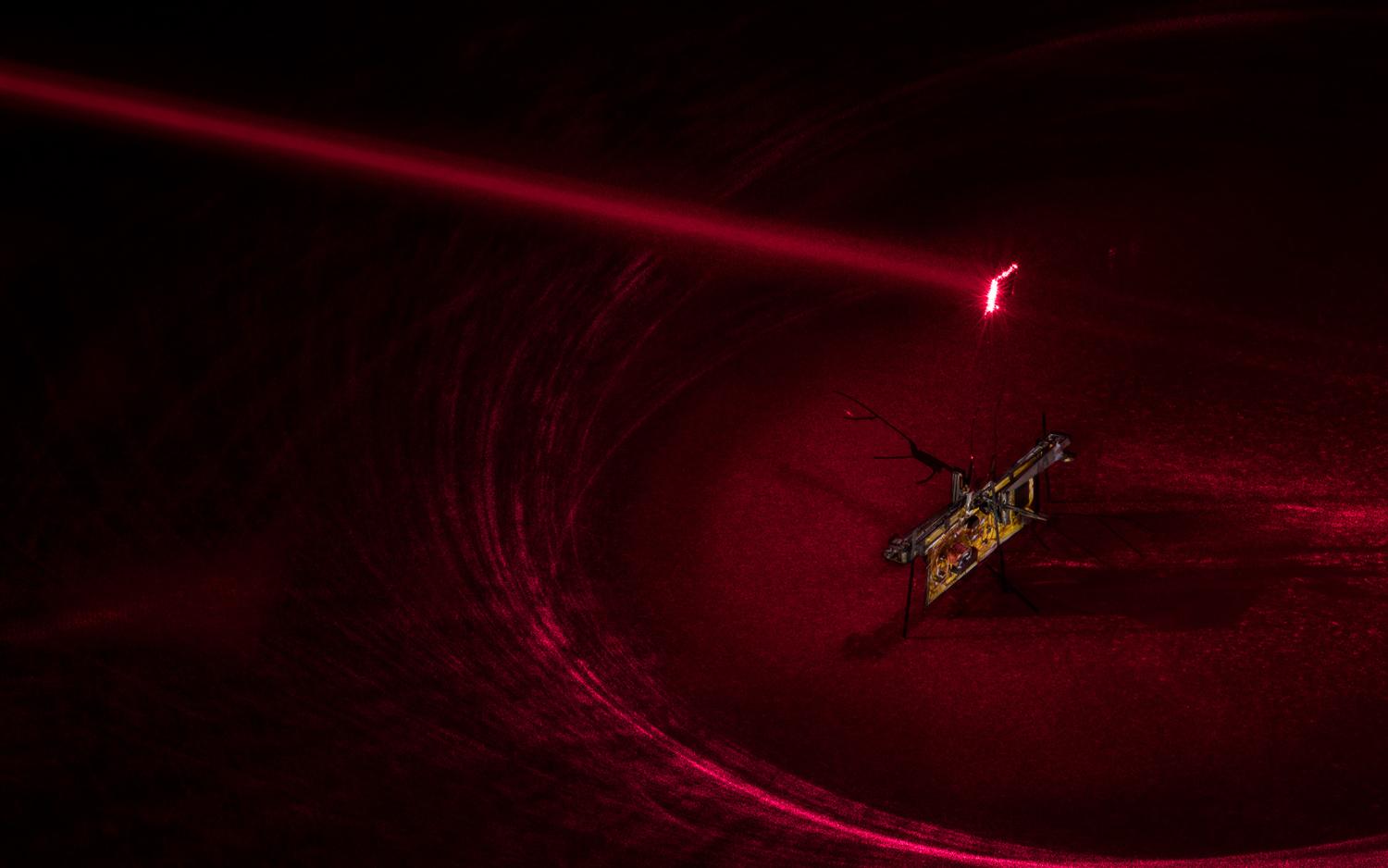Wireless 'RoboFly' Looks Like an Insect, Gets Its Power from Lasers

A new type of flying robot is so tiny and lightweight — it weighs about as much as a toothpick — it can perch on your finger. The little flitter is also capable of untethered flight and is powered by lasers.
This is a big leap forward in the design of diminutive airborne bots, which are usually too small to support a power source and must trail a lifeline to a distant battery in order to fly, engineers who built the new robot announced in a statement.
Their insect-inspired creation is dubbed RoboFly, and like its animal namesake, it sports a pair of delicate, transparent wings that carry it into the air. But unlike its robot precursors, RoboFly ain't got no strings to hold it down. Instead, the miniature bot uses a lightweight onboard circuit to convert laser light into enough electrical power to send it soaring. [New Flying Robots Take Cues From Airborne Animals]
RoboFly's creators will present their findings about the robot on May 23 at the International Conference on Robotics and Automation, held in Brisbane, Australia.
Animals' amazing abilities have inspired designs for robots that swim like manta rays, hover like jellyfish, jump like bush babies and even jog like humans. Prior to RoboFly, another insect-like bot, called RoboBee, demonstrated its ability to take off, land, hover and even perch midflight to conserve energy.
But RoboBee was leashed to its power supply and controller. RoboFly flies freely, thanks to a photovoltaic cell on its body that converts energy from a narrow laser beam. It produces about 7 volts of electricity, which a flexible onboard circuit boosts to the 240 volts required for liftoff. Meanwhile, a microcontroller on the circuit acts as RoboFly's "brain," sending pulses of voltage to the wings and making them flap much like an insect's wings would, according to the statement.

However, the cell doesn't store energy; the circuit must be within range of the fixed laser to generate power for the robot to take off, and once its cell moves beyond the laser's reach, RoboFly's flight is over.
Sign up for the Live Science daily newsletter now
Get the world’s most fascinating discoveries delivered straight to your inbox.
Tiny, highly maneuverable robots like RoboFly could quickly flutter into crevasses where bigger aerial drones simply wouldn't fit. One possible task for future versions of RoboFly could draw even more inspiration from flies — particularly, their talent for tracking down "smelly things," study co-author Sawyer Fuller, an assistant professor in the Department of Mechanical Engineering at the University of Washington, said in the statement.
"I'd really like to make one that finds methane leaks," he said. "You could buy a suitcase full of them, open it up, and they would fly around your building looking for plumes of gas coming out of leaky pipes. If these robots can make it easy to find leaks, they will be much more likely to be patched up, which will reduce greenhouse [gas] emissions."
Original article on Live Science.

Mindy Weisberger is an editor at Scholastic and a former Live Science channel editor and senior writer. She has reported on general science, covering climate change, paleontology, biology and space. Mindy studied film at Columbia University; prior to Live Science she produced, wrote and directed media for the American Museum of Natural History in New York City. Her videos about dinosaurs, astrophysics, biodiversity and evolution appear in museums and science centers worldwide, earning awards such as the CINE Golden Eagle and the Communicator Award of Excellence. Her writing has also appeared in Scientific American, The Washington Post and How It Works Magazine. Her book "Rise of the Zombie Bugs: The Surprising Science of Parasitic Mind Control" will be published in spring 2025 by Johns Hopkins University Press.









